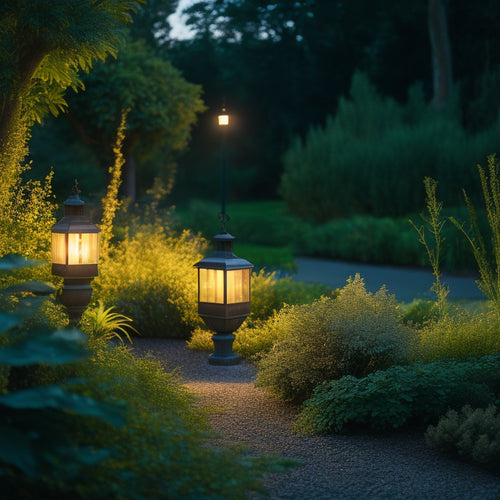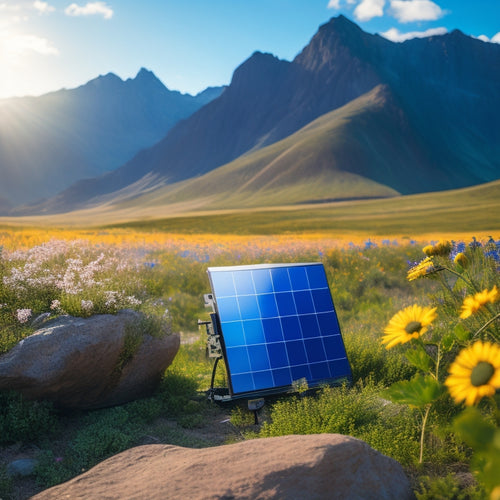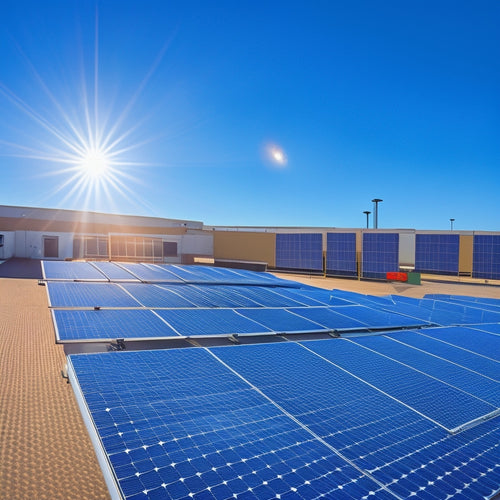
Backpacking Stove Setup and Maintenance Basics
Share
To set up your backpacking stove efficiently, choose a lightweight option that suits your cooking style. Look for portable designs with solid heat retention to optimize fuel use. Make sure you find a stable, flat surface free from flammable materials for setup. Store your stove and fuel in a cool, dry place to prevent damage. Understand the fuel types you're using; gas canisters offer quick setup, while liquid fuels work well in cold conditions. For faster boil times, consider using aluminum cookware. Achieving proficiency in these basics can greatly enhance your outdoor cooking experience and performance on the trail.
At a Glance
- Choose lightweight and portable stoves, such as aluminum or titanium canister stoves, to enhance backpacking efficiency and ease of use.
- Ensure proper setup by finding stable, flat surfaces and following manufacturer instructions to prevent accidents and ensure stability.
- Maintain stove and fuel in cool, dry places, using compact storage solutions like stuff sacks to protect gear from damage.
- Select the appropriate fuel type based on cooking needs and environmental conditions to optimize burner efficiency and performance.
- Test compatibility between your stove and cooking equipment to ensure effective heat transfer and maximize cooking performance during trips.
Lightweight and Portable Option
When you're selecting a stove for backpacking, consider weight and portability as top priorities. Choosing the right stove can greatly impact your overall pack weight, so you'll want to assess your cooking needs.
Additionally, if you're looking for a portable power solution to complement your cooking setup, foldable solar panels can offer energy independence while you're out in the wilderness.
Additionally, knowing how to set up and store your stove efficiently will enhance your outdoor cooking experience.
Choosing the Right Stove
Selecting the right stove for your backpacking trips is essential, especially if you prioritize lightweight and portable options.
You'll want to contemplate the stove materials, as they greatly impact weight and performance. Aluminum stoves are popular for their low weight and quick heating capabilities, while titanium offers superior durability at a slightly higher weight.
When assessing stoves, pay attention to heat retention. A stove with efficient heat retention will save fuel, allowing you to cook your meals while carrying less.
Look for models that incorporate insulated bases or windshields; these features enhance heat efficiency and minimize fuel consumption in variable weather conditions.
Additionally, reflect on the stove's fuel type. Canister stoves are often favored for their compact size and ease of use, making them perfect for spontaneous excursions.
Liquid fuel stoves provide versatility in fuel options but can be bulkier.
Ultimately, choose a stove that aligns with your backpacking style and goals. A good balance of lightweight design, durable materials, and efficient heat retention will keep you fueled and free to investigate.
Setup and Storage Tips
Setting up your backpacking stove efficiently can make all the difference in your outdoor cooking experience. To streamline your process, create a setup checklist before you hit the trail. This list should include essential items like your stove, fuel canister, pot, and lighter, ensuring you won't forget anything vital.
When you reach your campsite, find a stable, flat surface away from flammable materials. Set up your stove according to the manufacturer's instructions, making sure it's stable to prevent accidents. If you're using a canister stove, attach the fuel canister securely and check for leaks.
For storage solutions, prioritize lightweight and compact options. Use a stuff sack or a dedicated stove pouch to keep everything organized. This not only saves space in your backpack but also protects your gear from damage.
Store your stove and fuel in a cool, dry place when you're not using them, and avoid exposing them to extreme temperatures.
Compact for Easy Transport
When choosing a backpacking stove, consider lightweight design elements that minimize bulk without sacrificing performance.
Look for foldable and collapsible options that fit snugly into your gear, making transport effortless.
Compact solar cooking appliances, such as the GoSun Gos, are ideal for outdoor enthusiasts seeking both portability and efficiency.
A compact stove not only saves space but also enhances your overall backpacking experience.
Lightweight Design Considerations
A lightweight backpacking stove can greatly enhance your outdoor experience by ensuring you have the necessary cooking capabilities without the burden of excess weight.
When evaluating a stove, focus on material selection. Opt for aluminum or titanium, which are both durable and lightweight. These materials offer significant weight reduction compared to stainless steel or heavier metals, making them ideal for backpackers who prioritize mobility.
Another aspect to examine is the stove's design. Look for integrated systems that combine the pot and burner, minimizing the number of components you carry. This not only saves weight but also streamlines your cooking setup, allowing you to enjoy your time in nature rather than fussing with equipment.
Additionally, pay attention to the stove's fuel type. Canister stoves are typically lighter and more compact than liquid fuel options, providing a good balance between performance and portability.
By making informed choices about material selection and design, you can maintain a lightweight setup that won't compromise your cooking needs on the trail.
Ultimately, a well-chosen stove contributes to a satisfying and liberating backpacking experience, letting you focus on the journey ahead.
Foldable and Collapsible Options
Many backpackers appreciate foldable and collapsible stove options for their compact design, which makes transport hassle-free. These stoves typically employ innovative engineering, allowing them to collapse into smaller sizes without sacrificing performance.
When you're traversing rugged trails, this compact design is essential for maximizing your pack space.
You'll find that many models employ versatile materials like aluminum and titanium, which are lightweight yet sturdy. This combination not only enhances portability but also guarantees durability during your excursions.
Look for stoves that allow for easy setup and breakdown, so you can focus on enjoying nature rather than wrestling with equipment.
Consider options with adjustable features; they can accommodate various cooking styles and meal types, making them even more adaptable. Whether you're boiling water for coffee or simmering a stew, a well-designed foldable stove can meet your needs.
Remember to check the weight and packed dimensions of your stove before buying. Streamlined options can greatly lighten your load, providing you with the freedom to roam further without being burdened by cumbersome gear.
Welcome the ease of transport and enjoy the great outdoors to the fullest.
Burner Efficiency and Fuel Type
When choosing a backpacking stove, understanding fuel types is vital for maximizing burner efficiency. Different fuels burn at varying rates and temperatures, impacting your cooking times and overall performance.
Opting for renewable energy sources, like solar-powered stoves, can enhance your outdoor experience while supporting sustainability efforts and reducing carbon footprint.
To get the most out of your setup, it's important to pair the right fuel with your burner and follow specific performance tips.
Fuel Types Overview
Understanding the different fuel types available for backpacking stoves is essential for optimizing burner efficiency and ensuring effective cooking in the outdoors.
You'll encounter three primary categories: liquid fuels, solid fuels, and gas canisters.
Liquid fuels, like white gas or kerosene, are known for their excellent fuel efficiency and high heat output. They require careful fuel storage and handling, but they perform well in cold temperatures.
Solid fuels, such as fuel tablets, are compact and lightweight, making them convenient for short trips. However, they typically produce less heat and can be less efficient overall.
Gas canisters, often filled with a mixture of propane and butane, are popular for their ease of use and quick setup. They require specific fuel adapters if you want to connect them to certain stoves.
While they're convenient, be mindful of their environmental impact and check fuel regulations in your area.
Choosing the right fuel type not only affects your cooking experience but also your overall journey.
Burner Performance Tips
Selecting the right fuel type greatly impacts burner performance and efficiency. Each fuel comes with its unique characteristics that can either enhance or hinder your cooking experience in the outdoors. For ideal results, consider using a fuel that's customized to your stove's specifications.
For example, canister fuels offer excellent efficiency and ease of use, while liquid fuels provide versatility in extreme conditions.
To guarantee performance optimization, regular burner maintenance is essential. Clean your burner head to remove any fuel residue or debris that could obstruct flames. A well-maintained burner not only works more efficiently but also consumes less fuel, allowing you to maximize your resources when exploring the wilderness.
When choosing fuel, factor in the environmental conditions you'll face. Cold temperatures can affect fuel performance, so opt for fuels designed for low temperatures if you're venturing into colder regions.
Also, remember that the way you light your stove matters; a steady flame allows for better heat distribution and quicker cooking times.
Consider Your Cooking Style
Your cooking style on the trail greatly impacts your stove choice and setup.
Whether you prefer quick boil meals or intricate recipes, understanding various cooking methods will help you select compatible equipment.
For example, if you're planning to cook complex meals, consider how energy sources can enhance your cooking process; using a battery backup system could guarantee that you have reliable power even in remote locations.
Be certain to align your stove's capabilities with your culinary preferences for peak performance.
Cooking Methods Overview
When it comes to choosing a cooking method for your backpacking expeditions, considering both your culinary preferences and the weight of your gear is vital. There are several cooking techniques you can employ, each with its own advantages and drawbacks.
For instance, if you prefer quick meals, a boiling method can work wonders, allowing you to heat water for instant soups or rehydrate freeze-dried meals in minutes.
On the other hand, if you enjoy cooking more elaborate dishes, you might investigate simmering or sautéing. These methods require more fuel and time but can greatly enhance your culinary experience in the wild.
Meal planning plays an important role here; you'll want to choose ingredients that align with your preferred techniques while keeping weight in check.
Consider using lightweight, compact cookware that supports your chosen method. Think about pre-prepping meals at home or selecting foods that require minimal cooking.
Ultimately, the method you choose should reflect your style and the level of freedom you seek in your outdoor cooking escapades. Efficient cooking can lead to more time spent enjoying nature, so choose wisely!
Equipment Compatibility Considerations
What factors should guide your choice of equipment for cooking while backpacking? First, consider the stove materials. Lightweight options like titanium or aluminum are ideal for minimizing pack weight, while stainless steel offers durability. Each material has its pros and cons, impacting heat retention and cooking efficiency.
Next, think about compatibility testing between your stove and cookware. Not all pots and pans work seamlessly with every stove type. For instance, if you're using a canister stove, verify your cookware has a flat bottom for maximum stability and heat transfer.
Your cooking style also plays an important role. Do you prefer quick meals or gourmet cooking? If you lean towards elaborate dishes, a multi-burner stove might suit you better, while minimalist backpackers may opt for a compact, single-burner model.
Lastly, check fuel compatibility. Some stoves require specific fuel types, which can limit your options on the trail. Always prioritize convenience and efficiency—after all, the freedom of the wild is best enjoyed when you can easily whip up a meal!
Choose wisely for a harmonious cooking experience.
Faster Boil Times Than Competitors
To achieve faster boil times, you'll want to focus on efficient heat distribution techniques.
Stoves that employ advanced materials and design can maximize heat transfer, ensuring that every bit of energy goes towards heating your water.
Efficient Heat Distribution Techniques
In your quest for the fastest boil times, understanding efficient heat distribution techniques is essential. Effective heat retention and flame control can greatly enhance your cooking experience, allowing you to maximize fuel efficiency while minimizing wait times.
To help you visualize the impact of different techniques, here's a quick comparison:
| Technique | Benefits |
|---|---|
| Windshields | Reduces heat loss due to wind |
| Heat Exchangers | Increases surface area for heat |
| Pot Material (Aluminum vs. Steel) | Aluminum conducts heat better |
| Pot Size and Shape | Larger, wider pots boil faster |
| Flame Adjustment | Optimizes heat output for boiling |
Frequently Asked Questions
How Do I Clean My Backpacking Stove After Use?
To clean your backpacking stove after use, employ effective cleaning techniques specific to your fuel types. Remove residue from burners, wipe surfaces with a damp cloth, and make certain all parts dry thoroughly to prevent damage.
What Safety Precautions Should I Take While Using a Stove?
You might think safety's boring, but it's essential. Always guarantee proper stove fuel safety by storing fuel away from heat. Practice flame control precautions, keeping flammable materials nearby to minimize risks while enjoying your outdoor cooking escapade.
Can I Use My Stove in Rainy Conditions?
You can use your stove in rainy conditions, but consider the impact on stove performance. Adequate shelter and wind protection enhance efficiency, ensuring you stay safe and maintain functionality despite challenging weather considerations.
How Do I Store My Stove When Not in Use?
Storing your stove's like tucking a treasure away; protect it from the elements. Keep it clean, store fuel separately in a cool, dry place, and check for leaks during long-term care. Your freedom awaits!
What Are the Signs My Stove Needs Maintenance?
You'll notice your stove needs maintenance if its fuel efficiency drops or the flame flickers. Check for burner adjustment issues, clogged ports, or fuel line leaks to guarantee peak performance during your excursions.
Explore More
In the grand journey of backpacking, your stove isn't just a tool; it's your culinary lifeline! With lightweight designs that practically float, compact features that shrink your pack size, and burner efficiency that'll make your dinner boil faster than light, you can't go wrong. Whether you're simmering a gourmet meal or boiling water in a flash, the right stove alters your outdoor cooking. So gear up, and let your taste buds soar in the wild!
Related Posts
-

Why Outdoor Solar Lighting Systems Are Sustainable
Outdoor solar lighting systems are sustainable because they utilize renewable energy, drastically reducing your carbo...
-

High-Efficiency Solar Battery Chargers for Remote Areas
High-efficiency solar battery chargers are essential for your off-grid energy needs in remote areas. They maximize en...
-

Essential Solar Panel Mounts for Commercial Properties
When it comes to essential solar panel mounts for your commercial property, durability and wind resistance are key fa...


